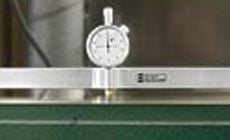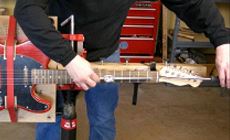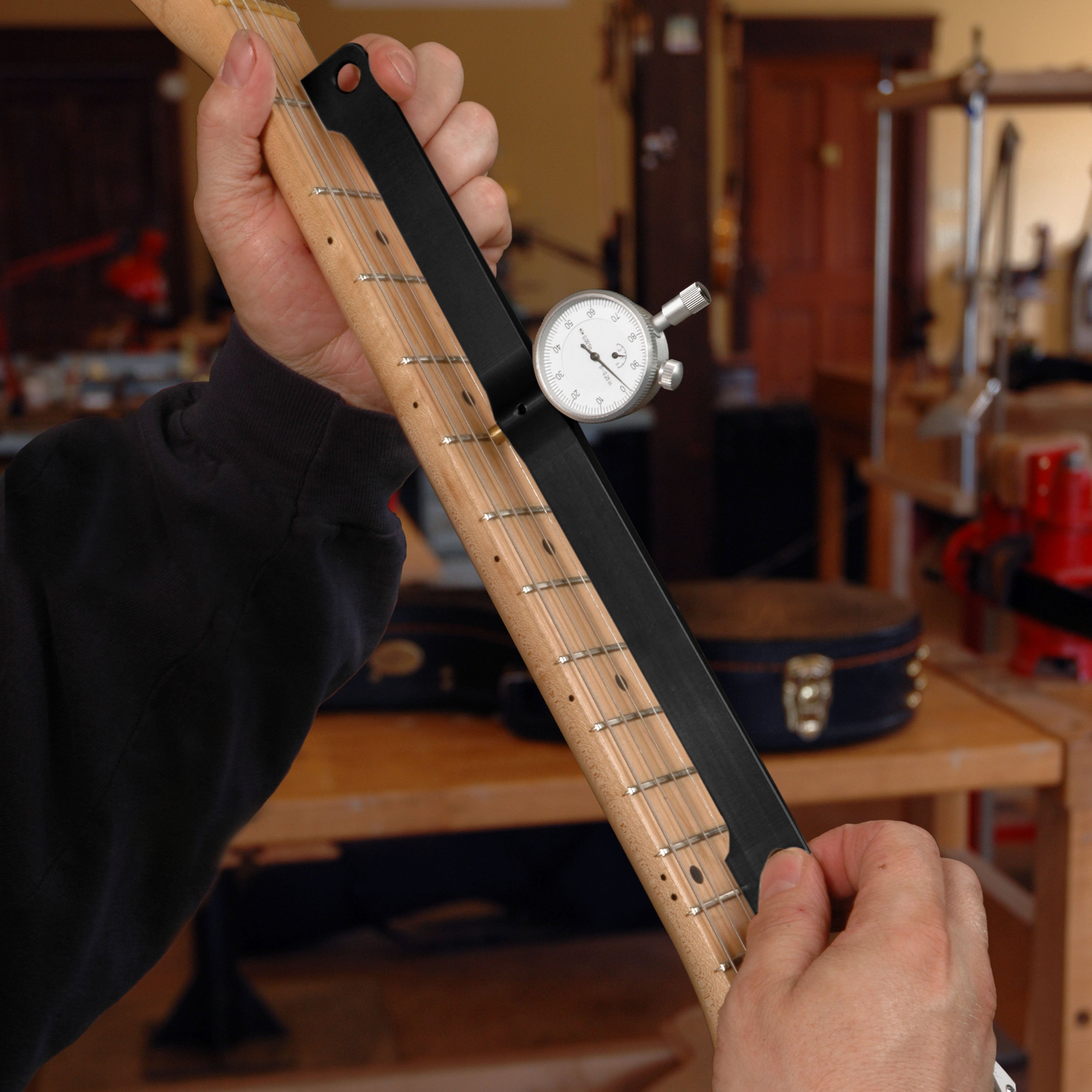Neck Relief Gauge Instructions
The Neck Relief Gauge is a quick and easy way to measure a guitar's neck relief/curvature when adjusting the truss rod.
The Neck Relief Gauge is a quick and easy way to measure a guitar's neck relief/curvature when adjusting the truss rod. The two feet and the indicator tip sit on the top of the frets, and the indicator reads the amount of bow in the neck. Adjusting the truss rod increases or decreases the amount of this relief in the neck. Zero the Neck Relief Gauge on an accurate flat plate. Here we are using the surface of a steel jointer. A machinist's granite plate would work well too as long as it is dead flat. To zero the dial indicator, loosen the dial lock (located at the approximate 1 o'clock position of the dial). Turn the knurled dial face so the zero mark is lined up with the needle and re-tighten the dial lock. Note that for most applications, the zero will not be in the 12 o'clock position. Place the tool on the guitar neck with one end on the first fret and the other end on the twelfth fret. As you adjust the truss rod, the dial will read the relief in thousandths of an inch. A reading of "zero" means that the fret tops are flat (zero relief). The indicator is off-center so it will sit on the fifth or the sixth fret. Adjust the truss rod until you reach the desired relief. The guitar is secured in our Neck Jig, and held in the playing position. Now the hands are free to adjust the truss rod while reading the relief.
Step 1:

Step 2:
A professional set up:

